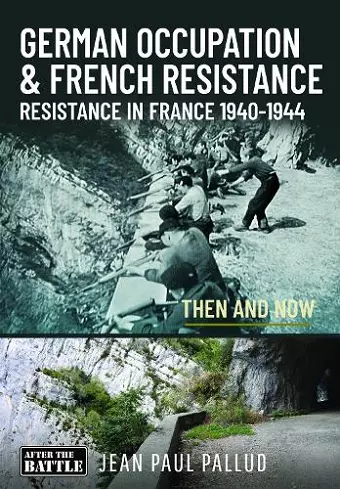German Occupation & French Resistance
Resistance in France 1940-1944
Format:Hardback
Publisher:Pen & Sword Books Ltd
Published:15th Mar '25
£25.00
Supplier delay - available to order, but may take longer than usual.

Resistance was a refusal to accept the finality of the military defeat of 1940; a refusal to accept that Vichy was the legitimate voice of France; a refusal to accept Vichy policy of collaboration. 'Resisters' were those French men and women who decided to keep on fighting the Germans. Rare men and women joined the Resistance in 1940, soon after the signature of the armistice, individually or within small isolated groups, alone, with no links between them. Others placed themselves at the service of the British SOE networks or the Free French networks. In line with the Soviet-German Non-Aggression Pact of August 1939, the Communist Party first took a neutral stance, though uncompromisingly hostile toward the Vichy regime. The Party joined the Resistance at the end of June 1941, when Germany attacked the Soviet Union, and soon created a clandestine armed force, ‘Francs Tireurs et Partisans’ (FTP). The communists called for immediate action and on August 21, a two-man squad shot Fähnrich Alfons Moser, a clerk with the Kriegsmarine, in the underground Metro in Paris. Five days later, the Germans shot five communists in reprisal, the first hostages to be executed in France. Many more followed, and recent studies indicate that 834 hostages were killed by the Germans between 1941 and 1944, in addition to approximately 2,900 resistance fighters executed after trial. The resistance movements were gradually organised, in the Occupied Zone, as well as in the Free Zone south of the Demarcation Line. In January 1942, de Gaulle sent Jean Moulin to France with the mission of unifying the Resistance. Jean Moulin succeeded in this unification and a National Council of Resistance (CNR) was created in May 1943, with representatives of the resistance movements of the two zones, political parties, and unions. The Germans hit hard in June, arresting Moulin on the 21st. He was so badly tortured by his SD interrogators that he succumbed within a fortnight. He revealed nothing, and the Germans were unable to dismantle the CNR. At the beginning of 1944, the armed groups of the different resistance movements were unified within the French Forces of the Interior (FFI). Plans were developed to bring chaos behind the German lines during the Allied landing in Normandy, and the Resistance promptly went...
ISBN: 9781036126261
Dimensions: unknown
Weight: unknown
224 pages